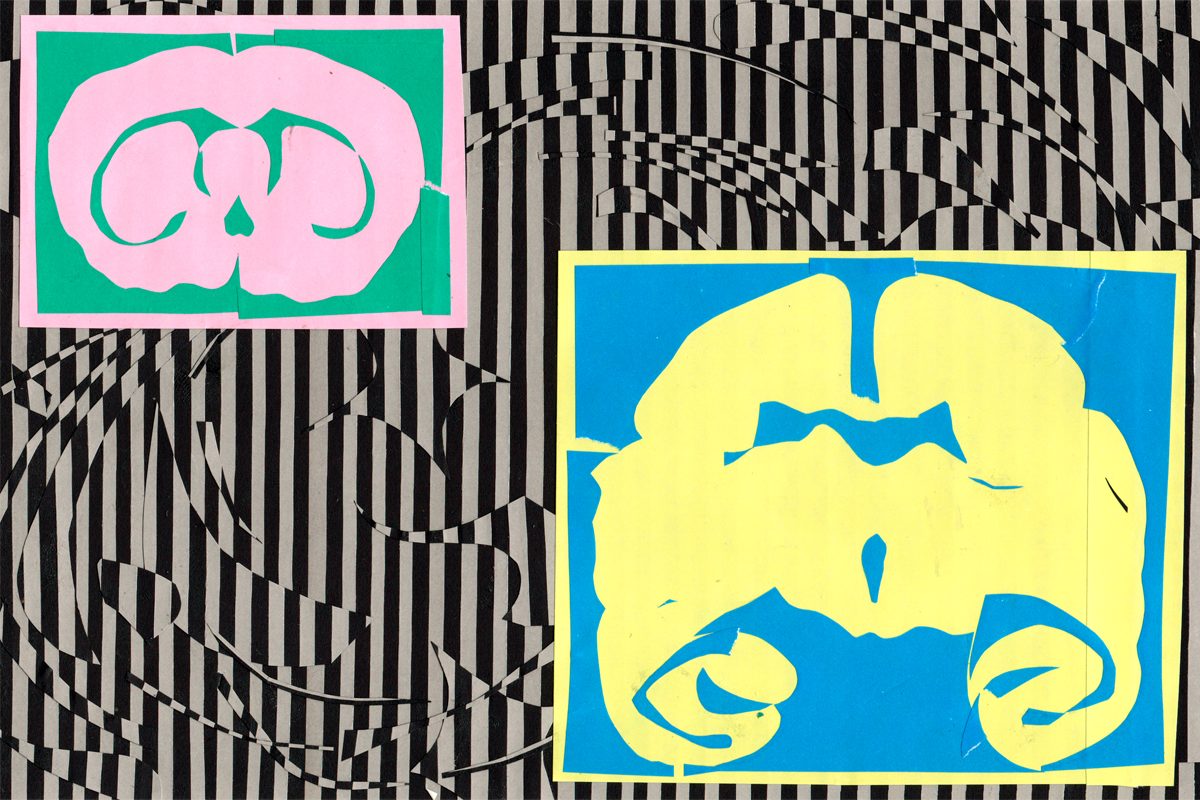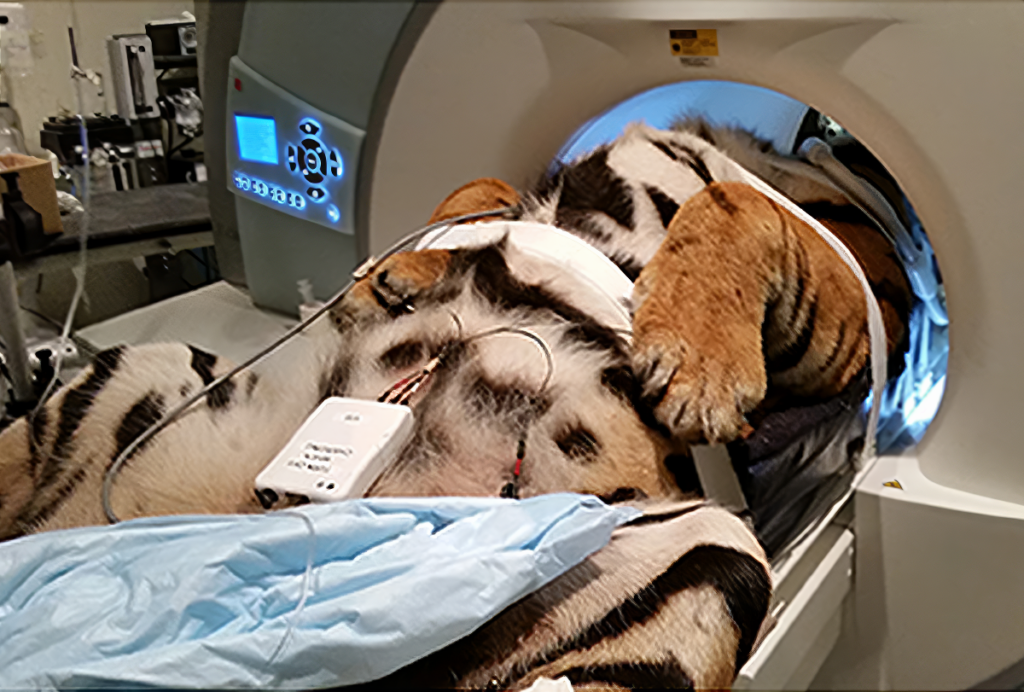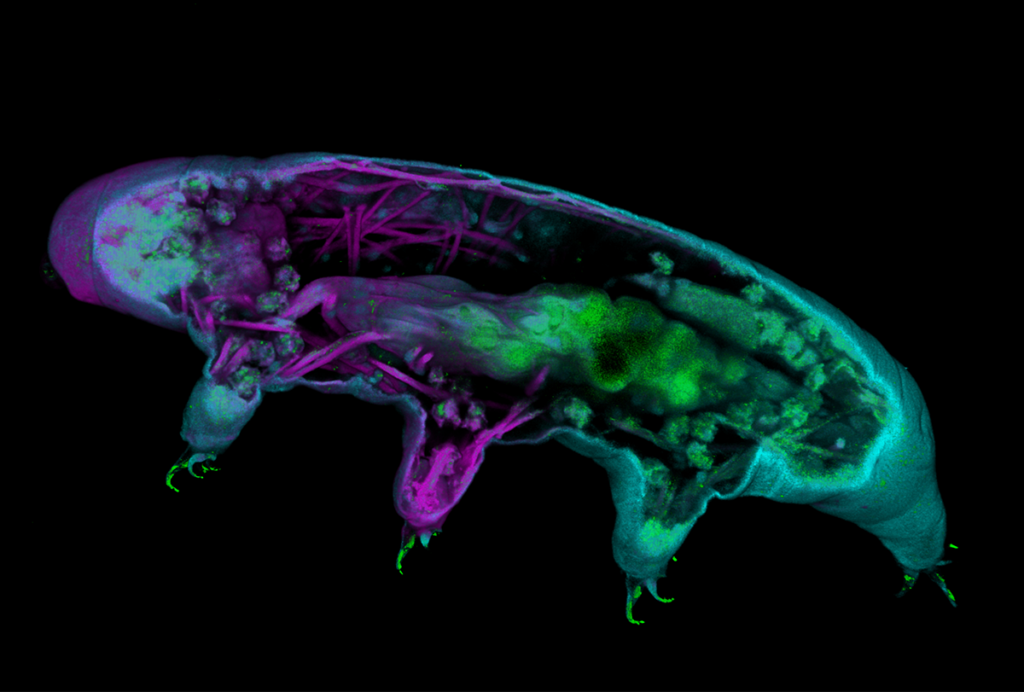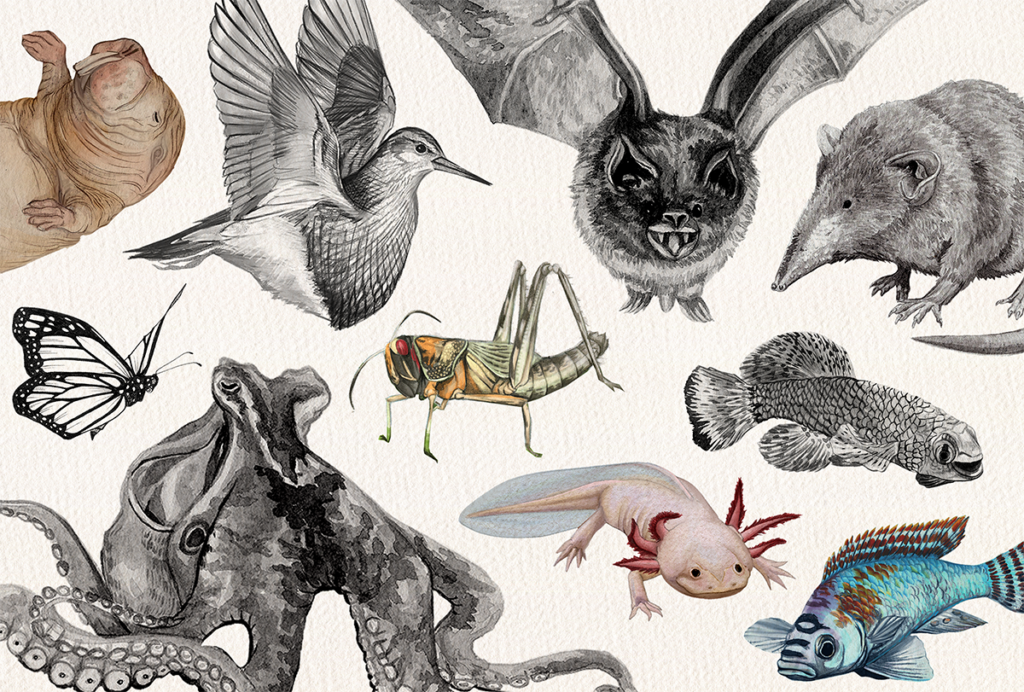The primary visual cortex carries, well, visual information — or so scientists thought until early 2010. That’s when a team at the University of California, San Francisco first described vagabond activity in the brain area, called V1, in mice. When the animals started to run on a treadmill, some neurons more than doubled their firing rate.
The finding “was kind of mysterious,” because V1 was thought to represent only visual signals transmitted from the retina, says Anne Churchland, professor of neurobiology at the University of California, Los Angeles, who was not involved in that work. “The idea that running modulated neural activity suggested that maybe those visual signals were corrupted in a way that, at the time, felt like it would be really problematic.”
The mystery grew over the next decade, as a flurry of mouse studies from Churchland and others built on the 2010 results. Both arousal and locomotion could shape the firing of primary visual neurons, those newer findings showed, and even subtle movements such as nose scratches contribute to variance in population activity, all without compromising the sensory information.
A consensus started to form around the idea that sensory cortical regions encode broader information about an animal’s physiological state than previously thought. At least until last year, when two studies threw a wrench into that storyline: Neither marmosets nor macaque monkeys show any movement-related increase in V1 signaling. Instead, running seems to slightly suppress V1 activity in marmosets, and spontaneous movements have no effect on the same cells in macaques.
The apparent differences across species raise new questions about whether mice are a suitable model to study the primate visual system, says Michael Stryker, professor of physiology at the University of California, San Francisco, who led the 2010 work. “Maybe the primate’s V1 is not working the same as in the mouse,” he says. “As I see it, it’s still a big unanswered question.”
Other researchers in the field are not so quick to doubt the value of mouse models but say the species differences raise other questions. “I think not that this is evidence that ‘oh, the mouse is terrible’ or ‘the monkey is terrible,’” Churchland says, but “what could we have in common that still allows these species differences to persist?”
I
n Stryker’s original mouse study, as the animals began to run, the V1 neurons became more active. But the opposite happened in marmosets as they ran on a monkey treadmill — essentially a wheel that the animals can continuously move along by grasping it with their feet, just as they do to climb trees. When the marmosets ran faster, their V1 neural activity dipped slightly, electrophysiological recordings revealed. The findings were published as a reviewed preprint in eLife in July.“Quantitatively, the effects are very different,” says lead researcher Alex Huk, professor of cognitive neuroscience at the University of California, Los Angeles, who is Churchland’s partner. Still, both mice and monkeys show a change in neural gain — or how sensitive the population of cells is to incoming stimuli — in response to movement.
The opposite change may reflect how the two species’ brains are wired, Huk and his colleagues suggest. In primates, for example, neurons in V1 have receptors that lead to a decrease in their population activity when the animal is in an engaged state; in the mouse brain, those neurons receive signals that boost activity in the same situation.
But that doesn’t explain what happens in macaques, which display no movement-related signals in V1, according to the macaque study, published in Nature Neuroscience in October. The monkeys, which are more closely related to humans than marmosets are, performed two visual tasks: They had to make an eye movement to select the correct stimulus on a computer screen, and they also had to fixate their gaze on a single point. During each task, the researchers recorded electrophysiological activity from neurons in the monkey’s V1, as well as a video of the animal’s face and body.
Initially, the findings seemed to replicate what Churchland and her colleagues reported in a 2019 mouse study: Spontaneous movements contributed to some of the variance in the monkeys’ V1 signals, though to a lesser degree than what was seen in mice. But that variance disappeared when the input to their retina was stable — such as when the animals’ gaze was fixed or if they only looked at the blank screen — even if their body moved.
That discrepancy shows that “these movements don’t directly modulate activity in the primate visual cortex,” says lead researcher Hendrikje Nienborg, investigator in the Visual Decision Making Section at the U.S. National Eye Institute. Instead, she says, the changing retinal inputs, which are more likely to occur when the monkeys move, are responsible for altering V1 activity.
To Nienborg and her colleagues, that finding was reassuring. Researchers have been recording from neurons in the monkey visual system for decades while keeping tight control over the input to the retina — and not worrying about how a stray twitch or scratch might change their measurements. Their new results suggest that approach is still valid, Nienborg says. “We don’t have to revisit the past 40 years.”
But mice, unlike monkeys, are not typically gaze-fixed during experiments, and so the same artifact could contribute to the movement-related signals in their V1, if they move their eyes differently when they run versus when they are still, Huk says. “I do think that adds some ambiguity to the interpretation of results in primary visual cortex and anywhere in the brain.”
T
he primate studies from last year represent only the first foray into translating this work from mice to monkeys —and the field still needs to sort out the findings, Churchland and others say. For one thing, she notes, the mouse and macaque experiments were not identical, making it difficult to definitively say that movement signals aren’t present in V1 of higher-order primates.Churchland and Huk, for example, both used Neuropixels electrode arrays in their work to observe population-level changes in V1 in response to movement. Nienborg and her colleagues, on the other hand, used probes that recorded fewer cells. For that reason, Churchland says, “we don’t really know whether there were shared gain fluctuations that were present in that study, in the way that there were in the marmoset study, for example.”
It is also possible that the mouse results were striking because the animals experienced big swings in their brain state — from drowsy when they were stationary to highly engaged when they ran or moved — and those changes drove the large V1 responses. If the marmosets, by contrast, did not experience significantly different states during the experiment, that could explain why their change in population activity was minimal, says Carsen Stringer, group leader at the Howard Hughes Medical Institute’s Janelia Research Campus, who was not involved in the work.
Another explanation for the species differences could be that in monkeys — and possibly in humans — information about the brain’s state is encoded in the cortex, just not in the sensory cortex. For example, neural signals in the macaque prefrontal cortex are modulated by spontaneous movements, a 2022 study found. The frontal cortex integrates and interprets diverse signals, so it makes sense to find more movement-related activity there than in V1, Churchland says.
The fact that mice do some of that integration in V1 may be simply a function of anatomy, Stringer says. “The mouse cortex is a lot more compressed than the primate cortex — you have a smaller working area,” she says. A mouse’s V1 also takes up proportionally more cortical real estate than a monkey’s does. “It might be doing some of that higher-level processing that in the primate might be happening in a higher-order area.”
For those who view monkeys as the optimal animal model for studying vision — self-described in a tongue-in-cheek manner as “monkey chauvinists” — these differences between mice and primates may demark the limits of how well the mouse visual system can reflect what’s happening in humans, Stryker says. “There are a number of reasons to suspect that it may not reflect it very well, despite the fact that the mouse is, and for some time will be, the only system where one can use a large variety of tools to understand mechanisms of cortical processing.”
D
espite the limitations of mouse models, starting with mice has its benefits, Stringer says. “The hope, always, is that the computation at least can be understood in the mouse and then applied to the primate, just because a lot of those studies are going to be very hard in the primate.”And as technology advances, more researchers are making the effort to translate mouse studies to monkeys, Huk says.
He and his colleagues are working to understand the neural signals that suppress V1 activity while marmosets run to see whether the same mechanisms are at play as in mice, he says. Churchland, Stringer and others are developing their own models to analyze how an animal’s movements relate to its brain state and neural activity. And other researchers are focused on how changing a monkey’s state — rather than just its movement — can modulate V1 activity.
“These papers are just the beginning of the engagement process. Everyone — mouse and monkey [researchers] — is thinking, ‘OK, let’s figure this out,’” Huk says. “Let’s unpack not just whether running modulates neural activity, but [also] how much the eyes move when an animal’s running and not moving. And whether eye movements are coincident with whisking in a mouse, or with arm movements.”
Designing those experiments is not easy, he says. “It’s a nasty web of naturally occurring correlations.” But, he adds, comparing results across mice and monkeys should ultimately provide greater insight into how the visual system works: “What’s a general principle and what’s a superficial difference?”






